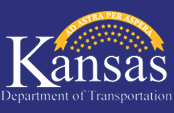ROUNDABOUTS
Roundabouts are used throughout the world in countries such as England, Australia and in recent years here in the United States to reduce injury accidents, traffic delays, fuel consumption, air pollution and construction costs, while moving more traffic and enhancing intersection beauty. They have also successfully been used to control traffic speeds in residential neighborhoods and are accepted as one of the safest types of intersection design.
A roundabout is a circular intersection but very different than the traffic circle used previously in this country. The major differences between a traffic circle and a roundabout are:
- Yield at Entry
- At roundabouts the entering traffic yields the right-of-way to the circulating traffic. This yield-at-entry rule keeps traffic from locking up and allows free flow movement.
- Deflection
- The splitter and center island of a roundabout deflects entering traffic and reinforces the yielding process.
- Flare
- The entry to a roundabout often flares out from one or two lanes to two or three lanes at the yield line to provide increased capacity (ability to move traffic).
WHY USE A ROUNDABOUT?
- Safety—Roundabouts have been shown to reduce fatal and injury accidents as much as 75%. The reduction in accidents is attributed to slower speeds and reduced number of conflict points
(See Figure 2)
- Low Maintenance—Eliminates maintenance costs associated with traffic signals which amount to approximately $3,500 per year per intersection. In addition, electricity costs are reduced with a savings of approximately $1,500 per year per intersection.
- Reduced Delay—By yielding at the entry rather than stopping and waiting for a green light, delay is significantly reduced.
- Capacity—Intersections Intersections with a high volume of left turns are better handled by a roundabout than a multi-phased traffic signal.
- Environmental—A reduction in delay corresponds to a decrease in fuel consumption and air pollution.
- Aesthetics—The central island provides an opportunity to beautify the intersection with landscaping.
HOW TO DRIVE A ROUNDABOUT
As you approach a roundabout there will be a YIELD sign and dashed yield line. Slow down, watch for pedestrians and bicyclists, and be prepared to stop if necessary. When you enter, yield to circulating traffic on the left, but do no stop if it is clear.
A conventional roundabout will have ONE-WAY signs mounted in the center island. They help guide traffic and indicate that you must drive to the right of the center island. Upon passing the street prior to your exit, turn on your right turn signal and watch for pedestrians and bicyclists as you exit.
Left turns are completed by traveling around the center island.
(See Figure 3)
This information is available in alternative accessible formats. To obtain an alternative format, contact:
Kansas Department of Transportation
Office of Public and Employee Information
700 SW Harrison
Topeka, KS 66603-3754
Phone (785)296-3585 (Voice)/(TTY)
OR:

